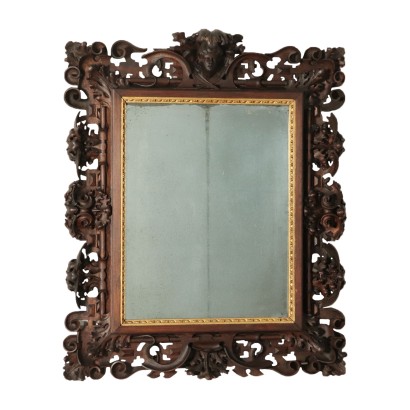Carved Walnut and Linden Mirror Italy 19th Century
Features
Style: Umbertino (1870-1900)
Age: 19th Century / 1801 - 1900
Origin: Italy
Description
This mirror has a richly carved frame with volutes, foliaceous patterns, and a cherub face. The inner part of the frame is gilded and carved with a seamless pattern.
Product Condition:
Fair condition. Wear consistent with age and use.
Dimensions (cm):
Height: 100
Width: 82
Depth: 13
With certificate of authenticity
Additional Information
Style: Umbertino (1870-1900)
The name of this style is due to the ruler of the time Umberto I, appointed King of the Kingdom of Italy on 9 January 1878 and assassinated on 9 July 1900.The Umbertino style is typically Italian and belongs to that Eclectic period that characterized the second half of the 19th century, which lasted just under twenty years, the Umbertino style spread around 1880 and ended around 1895 when a new style called Liberty and universally known took over. like Art-Nouveau to be followed by Art-Decò.
In this style, mainly eclectic and monumental, Gothic and Baroque elements originally belonging to the Renaissance but also adorned with large masks, frames and decorations were re-proposed in the furniture, from the bedside table to the large wardrobe or sideboard.
Find out more about the Umbertine style with our insights:
An Umbertine secretary dedicated to Dante Alighieri
A comparison between a Luigi Filippo console and an Umbertina one






























